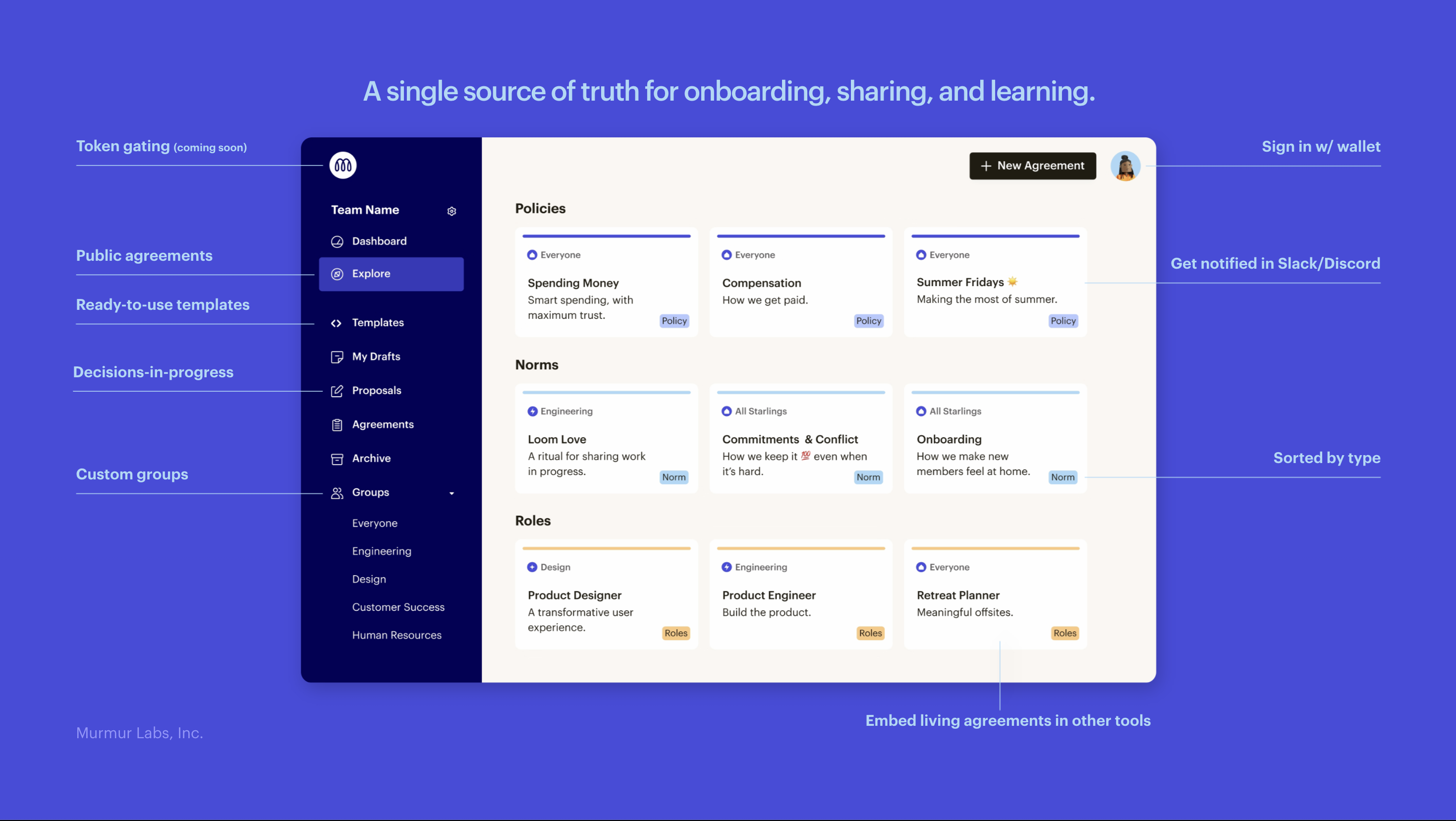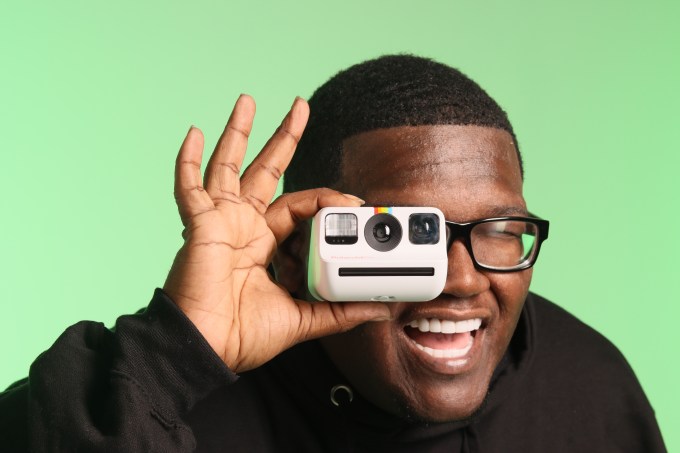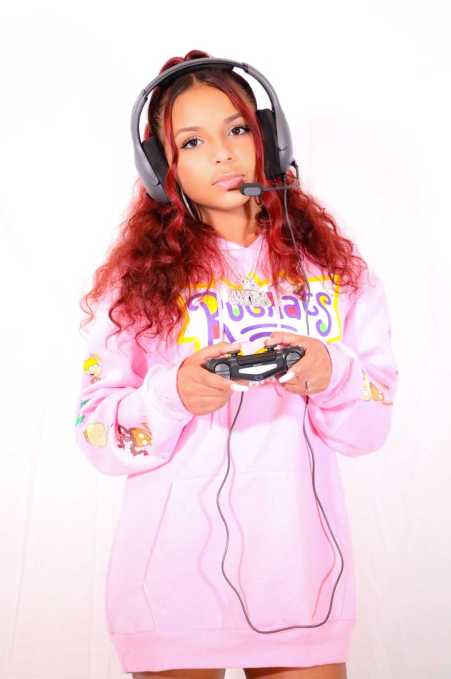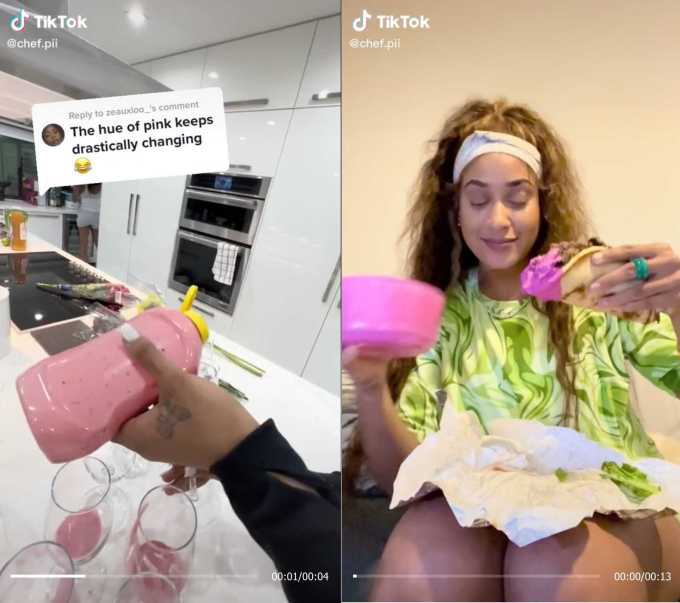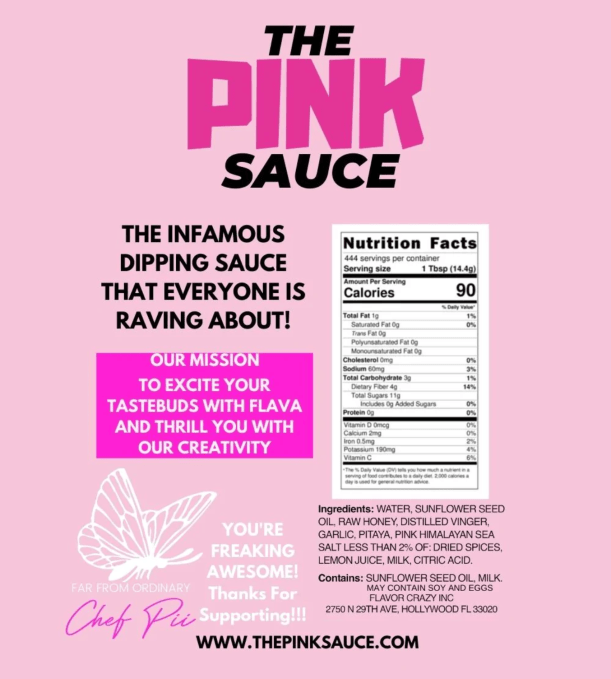On Lafayette Street in SoHo, young, fashionable women lined up around the block to enter a minimalist, millennial oasis, the most perfect Instagram feed brought to life. Staff members glided around the store in pastel pink suits, each embodying the kind of girl that Glossier made us all want to be: beautiful, yet effortless.
“We want to inspire, but we also want to be realistic and show beauty in real life,” Glossier founder and CEO Emily Weiss said in a 2017 interview with Inc, just as the brand had reached what Weiss herself described as “cult status.” Even Chrissy Teigen and Reese Witherspoon wore Glossier’s signature Cloud Paint blush to the Oscars.
We understood the irony of the message as we sampled their sheer, almost-not-there lipgloss, then looked into a mirror decorated with white vinyl letters in the bustling pop-up shop: you look good, our reflection told us. Glossier affirmed our inherent beauty, then reminded us that we can be even more beautiful if we buy their “Boy Brow” pomade, which sold one tube every 32 seconds by 2018.
Glossier’s commoditized feminism aside, it’s no easy task to launch a $1.8 billion company in the brutally competitive beauty industry, especially one with such broad appeal. After all, Glossier’s founder and CEO Emily Weiss is very, very far from the first entrepreneur to profit off of our desire to look good. And who cares? That Cloud Paint is pretty magical, if we’re being honest. Like with many consumer brands geared toward women, we buy in not just because of the marketing, but because of the product itself.
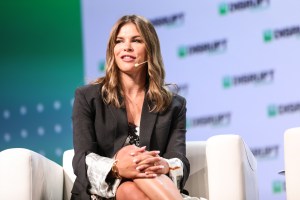
Glossier founder Emily Weiss speaks at TechCrunch Disrupt in 2018 Image Credits: TechCrunch
But as Weiss steps down from her current role and prepares for maternity leave, her success and subsequently typical choice to become her company’s board chairperson has been co-opted as the end of the “girlboss” era.
What even is a ”girlboss” anymore? Once a vaguely aspirational term of praise reserved only for affluent white women, the moniker now reflects the maddening contradiction of workplace feminism: we know that it’s not enough to just be a woman in power, and that what we do with that power matters far more than simply wielding it. Yet women founders and CEOs remain frustratingly rare as Silicon Valley’s glass ceiling persists, almost impenetrable – venture capitalists (only 13% of whom are women in the U.S.) allocate 98% of their funding to startups helmed by men. It’s no wonder, then, how we’ve ended up with the paradox of the “girlboss.”
The making (and unraveling) of the ‘girlboss’ myth
Nasty Gal CEO Sophia Amoruso is credited with coining the term in the title of her 2014 memoir, “#Girlboss,” which chronicled her rags-to-riches success and was adapted into a Netflix show. The following year, she stepped down as CEO, and by 2016, her company filed for bankruptcy and was purchased by Boohoo. Then, Amoruso started a company called Girlboss that was likened to “Linkedin for Women.” She stepped down from that company in 2020.
“Girlboss” originally gained popularity beyond Amoruso’s book as a form of praise, according to Kirsten Green, co-founder and investor at Forerunner Ventures. Green has spent her career bankrolling the companies that define what’s cool, including Glossier, Outdoor Voices and Away, whose founders are often cited as the archetypal examples of “girlbosses.”
“I truly believe the ‘girlboss’ term was created to celebrate an emerging wave of female leaders – which is still rare in business, and was even rarer around 10 years ago when the phrase was popularized,” Green told TechCrunch in an email.
The term itself, though, hasn’t aged nearly as well as Green’s portfolio. Years later, even Amoruso herself has expressed discomfort with the phrase.
“It’s not a compliment. It’s more of a mockery,” said Isa Watson, founder and CEO of social media app Squad. Watson, who holds an MBA from the Massachusetts Institute of Technology, has raised $4.5 million for her app, placing Squad in the mere 0.34% of companies funded last year with a Black woman founder.
The idea of the “girlboss” today is shrouded in privilege. Since its debut, the term has come to represent a small cohort of white, affluent millennial women who rise up into positions of power, preach the gospel of feminism, then ultimately fumble the millenial pink ball and fall from grace when it turns out that their politics just aren’t that transformative.
“[The term “girlboss”] feels disconnected from reality, which is that there are very few women that have had this label applied to them,” said Sruti Bharat, who most recently worked as interim CEO at All Raise, a venture fund supporting women and non-binary founders. “They all seem to have slightly similar journeys, like they run consumer brands, maybe [have] slightly problematic racial politics, and some kind of takedown piece [is written about them]. That’s like the PR trope.”
Unlike the glowy skin depicted on Glossier’s Instagram, the reputation of its founder and CEO Emily Weiss is not without blemishes. Glossier’s management has faced well-deserved scrutiny for failing to support members of its retail staff, leaving them to endure racist treatment from customers. (Following the complaints, Weiss issued a public apology, and Glossier donated $1 million – half to organizations fighting racial injustice, and half to Black-owned beauty businesses).
Then, when the pandemic hit, Glossier laid off all of its retail employees and shut down its physical stores. But just a year later, the beauty brand raised an $80 million Series E round at a $1.8 billion valuation to open up permanent retail stores in Seattle, Los Angeles and London, capitalizing on the dewy fairytale of its Manhattan flagship store.

Mandela SH Dixon, All Raise’s current CEO Image Credits: All Raise
Early this year, the company slashed staff yet again. Glossier laid off one-third of its corporate employees, mostly on its tech team, as Weiss admitted to staff that the company got “distracted” from its core beauty business and got ahead of itself with hiring. Weiss’ recent departure from the CEO role, along with that of her CMO from the company altogether, only amplified the scrutiny – fairly or not.
Although a select few white women have been able to rise through the ranks of startup success, tech leadership is far from reflecting the populations its products serve. Even All Raise, which was founded with the explicit mission of supporting diverse founders, just recently appointed a Black woman, Mandela Schumacher-Hodge Dixon, as its long-term CEO. Dixon is setting out to broaden the nonprofit’s definition of inclusion after it was helmed by its white, female founder Pam Kostka for three years.
‘They’re not collecting stats on that’
“The end of the girlboss era? What does that even mean?” asked Rosie Nguyen in a conversation with TechCrunch. Nguyen is founder and CMO of Fanhouse, a creator platform that just raised $25 million from Andreessen Horowitz.
Despite the prevalence of the “girlboss” in pop culture, the reality on the ground for women entrepreneurs has played out much differently. Less than 2% of venture capital funding went to all-female founding teams in 2021, marking a five-year low.
There’s a disconnect between the evolution of feminism in the outside world, juxtaposed with the frustratingly slow rate at which Silicon Valley realizes that a woman CEO shouldn’t be a novelty. Outside of work, women fight for an intersectional feminism that’s trans-inclusive, uplifts people of color and advocates for disability rights. But in startup culture, just being a woman in and of itself is seen as subversive.
“As a female founder, it kind of stops there, because that’s impressive enough to people, but I’m like, well actually, I’m also a Vietnamese immigrant,” said Nguyen. “I was born in Vietnam. I’m Southeast Asian. Like, do you know any Vietnamese immigrant female founders in a Series A startup? I don’t know, maybe I’m the only one, but they’re not collecting stats on that… Or, alright, I’m queer, I’m bisexual, but right now, everything is so white and male that anything else is already impressive to people.”
The confusion around what “girlboss” actually means stems from its application to a broad range of poor management decisions, from the ignorance Weiss displayed about racism in Glossier stores (unfortunately, this is rather common amongst white CEOs) to the dangerous, life-threatening fraud perpetrated by Theranos’ Elizabeth Holmes.
The “girlboss” stereotype poisons the image of the woman CEO as more and more companies run by white men earn the overwhelming majority venture funding. And of course, those startups are by no means innocent when it comes to bad management.
“If you look at someone like Adam Neumann and WeWork for example, he was covered [in the media] in a very flattering light until the very moment when it all came tumbling down,” said Watson. “I mean, there’s a number of things that went wrong throughout the course of his tenure that were never brought up. And so when you have female founders that have simple management missteps, I just feel like they’re brutalized by the media, and the culture is anxiety-inducing.”
As it is, very few women founders even have the chance to ascend to the top of their field, and those who do are largely white women who come from privileged backgrounds. The female entrepreneurs who succeed by traditional measures are vilified as “girlbosses,” while women of color seem to be left out of the discourse entirely. That’s part of why Bharat, a woman of color with South Asian heritage, says she has never identified with the term.
If Weiss, the founder who built a makeup brand that’s been hailed as the next generation’s Estee Lauder, who pioneered the blueprint for several DTC brands that came after hers, is portrayed as a failure for taking maternity leave and switching executive roles at the company she created simply because she’s a woman, that doesn’t bode well for underrepresented founders without Weiss’s advantages.
“I think it’s like second- or third-wave feminism, like ‘lean in,” Nguyen said, referencing the catch phrase of controversial, longtime Meta COO Sheryl Sandberg, who just stepped down. “It’s the whole concept of feminism as like, why aren’t more billionaires women? It became laughable to people because the point is not having more female billionaires, the point is having less income inequality.”
The pitfalls of corporatized feminism
While the women who have been branded as archetypal “girlbosses” have largely failed to deliver on the promise of empowering women through selling makeup (or suitcases, or athletic gear), it’s worth examining why they’re even expected to do so in the first place.
“Just because a woman has been oppressed, or has been marginalized, or treated differently, doesn’t mean that she is also aware of how to fix it, or how to speak about it or is not perpetuating it herself. We’re always advocating for women to be icons … but the reality of that is it takes actual advocacy work and movement building and policy,” Bharat said.
The bar is higher for women entrepreneurs not only in terms of financial results they’re expected to deliver (cough cough, Elon Musk), or the thin margin of error they’re afforded, but also in terms of what their job description implicitly includes. The industry doesn’t look to white male founders to serve as perfect advocates for social justice issues. Indeed, the reality of our economic system is that it’s not their job, and whether we like it or not, corporate feminism isn’t going to save us from difficult ethical dilemmas either.
“I really feel for some of these leaders who are trying to learn as they are very much in the public eye,” Bharat said. “There’s very little room for error for women, and I’m not saying there weren’t mistakes. There definitely have been, but the room to recover is completely limited.”
The “Girlboss” label harms all women because it’s a reductive stereotype that detracts from the conversation around real issues in corporate culture and society. It’s a distraction that uses emerging women founders as a scapegoat for systemic issues instead of opening up a productive discussion on how we can reform workplaces to function better for all people, particularly members of marginalized communities.
By conflating all management mistakes as equal, we lose sight of each individual issue we’re trying to remedy – and by calling Weiss a “girlboss,” we risk discouraging women in leadership roles from taking risks, learning and growing. We also perpetuate the erasure of women of color in tech.
This isn’t the end of the woman founder and CEO. Instead, let’s make it the end of unrealistic expectations for women who run companies, and the hollow, corporatized feminism that comes as a result.


